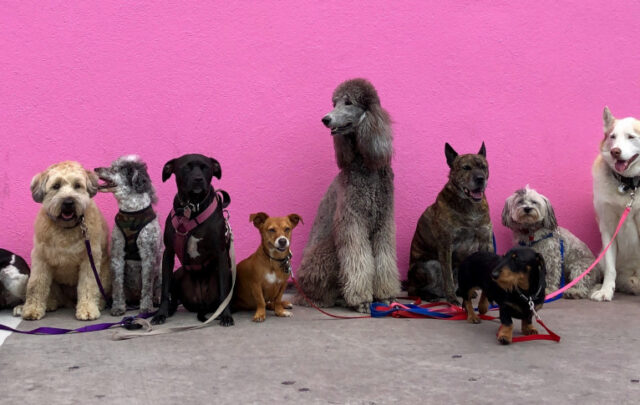In 2007, a collective called Futurefarmers instigated a demonstration garden in front of San Francisco’s City Hall. This Victory Garden was a constellation of 10 different garden projects in the Bay Area, demonstrating the diversity of urban farming practices funded by the cities of San Francisco and Oakland. Out of this grew a new city policy that secured funding and land for urban farming projects.
More recently, Futurefarmers created Flatbread Society, presenting a compelling proposition to create a permanent site dedicated to grain production and baking on Oslo’s converted waterfront, as part of a public art programme commissioned by Bristol-based arts producers Situations.
Californian artist Amy Franceschini, and founding member of Futurefarmers, is interviewed by Rowan Lear.
What is Futurefarmers and where did the idea come from?
Futurefarmers is a diverse group of practitioners: artists, researchers, designers, architects, scientists and farmers. We started as a design studio, then moved more into art projects. We share a commitment to experimentation – all of us are specialists in one way or another.
 Futurefarmers was inspired by my personal history. My father owned a large-scale pesticide company; while my mother became an organic farmer and food activist. I’m interested in how we can create a space where these two voices come together.
Futurefarmers was inspired by my personal history. My father owned a large-scale pesticide company; while my mother became an organic farmer and food activist. I’m interested in how we can create a space where these two voices come together.
Futurefarmers is not always about food itself, but uses farming as a metaphor – it is the system that feeds us and an integral part of our lives, connected to seasons.
As well as scientists and artists, Futurefarmers includes astronomers. Tell us more…
Gordon Childe, cited in The People’s History of the World by Chris Harman, writes: “The accumulation of a substantial social surplus in the temple treasuries – or rather granaries – was actually the occasion of the cultural advance that we have taken as the criterion of civilisation.”
When grain began to be stockpiled in Meso-America and the Middle East, people began to make marks on clay to keep record – the origins of writing. Detailed observations of the night sky followed, and an association was made between grain yield and the stars. We calculated when to grow as dictated by the cosmos; we held rituals defined by the stars.
Today, we’ve lost this knowledge about how and where we are in the universe – and how dependent we are on these complex systems.
What do you think of our current food market economy, and the possible alternatives?
The problem is that a small amount of people make a lot of money from it, and these people are not farmers, but multinational companies.
Grain was our first economic currency, in Norway the first bank was a seed-bank. We’ve lost sight of the fact that grain is still a major part of our economy because it’s become so abstract. In times of famine and economic depression – when bread is rationed – surplus and scarcity are far more visible.
Futurefarmers appears to empower people at a grassroots level, rather than negotiate with, say, large corporations? Is this the best way to effect change?
We’re not against working with corporations, but every situation begs a different mode of working. I’m interested in finding a common meeting point – one that connects corporations and people – and food is often that point. Food brings people together. In this messy economic, political, environmental situation that we’re in – we need to work together.
Flatbread Society recently instigated Seed Action in which ancient, non-GMO grains were broadcasted by hand on an open field in Oslo: rye, wheat, barley, emmer, spelt, durum, kamut, einkorn and oats. Where did your interest in heritage varieties come from?
Flatbread was the starting point – we wanted to look at the source of the wheat and to represent small-scale produced varieties. The use of heritage grains raises questions of the contemporary. We are using an ancient medium that is endangered, varieties that need to be nurtured. It’s important to conserve and propagate varieties that might be able to withstand climate change – drought and flood.
There are, of course, problems about the idea of heritage – which we also hope to question. Whose heritage is it?
What is the role of Futurefarmers – are you instigators, collaborators, demonstrators or catalysts?
Anthropologist Michael Taussig called us ‘Tricksters’. For some, this might imply fraud, but actually the role of a trickster is quite different in other cultures. From the point of view of an indigenous South American, it refers to tricking people into changing their perspective; being lured into a moment where your logic disappears.
Amy Franceschini and Futurefarmers brought an amphibious makeshift bread oven – housed in a fully serviceable canoe – to Bristol, and will host a Public Art (Now) workshop (Liverpool) and live event (Bristol) on Friday 11th and Sunday 13th July. Flatbread Society was commissioned by Bristol-based, award-winning art producers, Situations.
Watch Futurefarmers in action:
Flatbread Society’s Seed Action: http://youtu.be/jK2nA7fIpaM
Amy introduces Flatbread Society’s bakehouse: http://youtu.be/18WLX-IDJX4
Images by Max McClure





